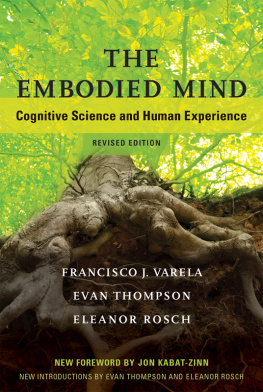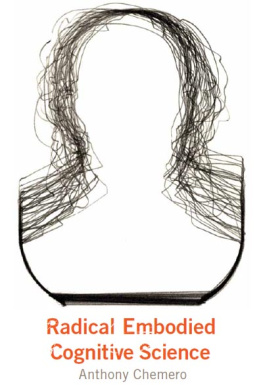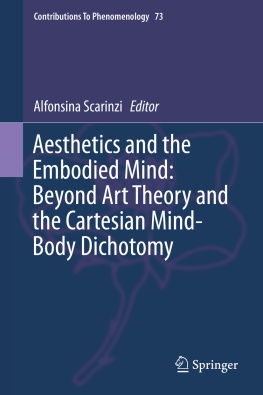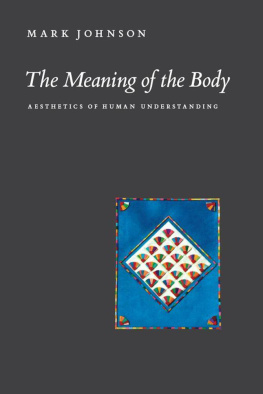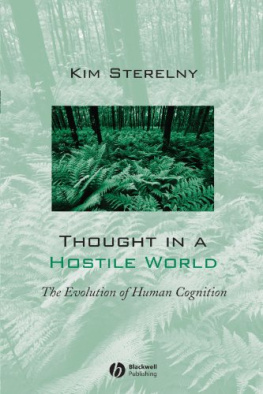Contents
Guide
Pagebreaks of the print version
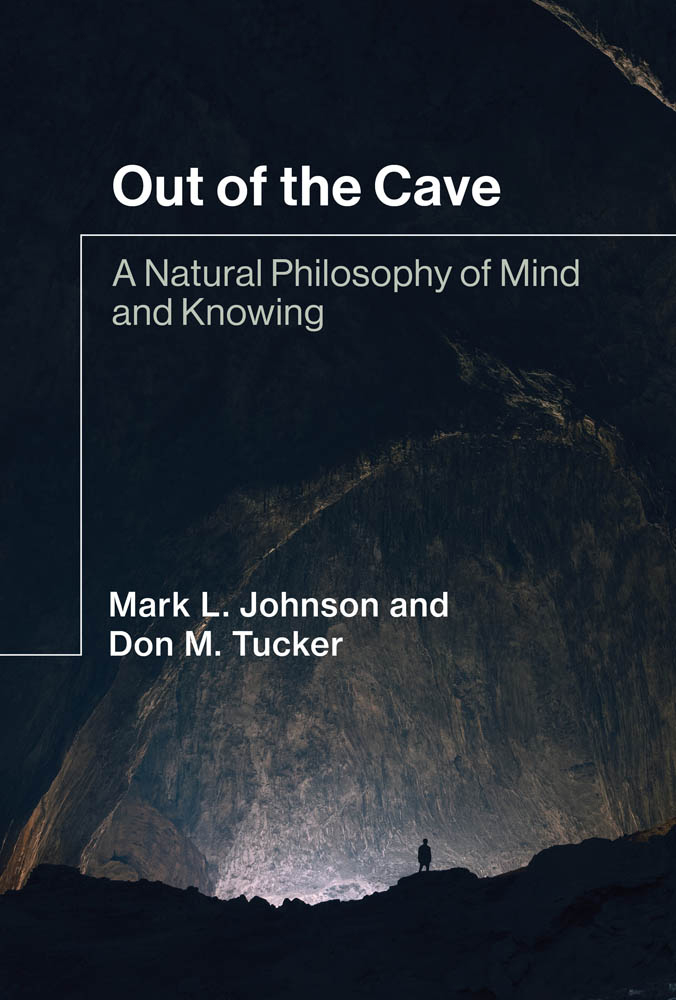
Out of the Cave
A Natural Philosophy of Mind and Knowing
Mark L. Johnson and Don M. Tucker
The MIT Press
Cambridge, Massachusetts
London, England
2021 Mark L. Johnson and Don M. Tucker
All rights reserved. No part of this book may be reproduced in any form by any electronic or mechanical means (including photocopying, recording, or information storage and retrieval) without permission in writing from the publisher.
The MIT Press would like to thank the anonymous peer reviewers who provided comments on drafts of this book. The generous work of academic experts is essential for establishing the authority and quality of our publications. We acknowledge with gratitude the contributions of these otherwise uncredited readers.
Library of Congress Cataloging-in-Publication Data
Names: Johnson, Mark, 1949- author. | Tucker, Don M., author.
Title: Out of the cave : a natural philosophy of mind and knowing / Mark L. Johnson and Don M. Tucker.
Description: Cambridge, Massachusetts : The MIT Press, [2021] | Includes bibliographical references and index.
Identifiers: LCCN 2020048448 | ISBN 9780262046213 (hardcover)
Subjects: LCSH: Philosophy of mind. | Knowledge, Theory of.
Classification: LCC BD418.3 .J65 2021 | DDC 128/.2--dc23
LC record available at https://lccn.loc.gov/2020048448
d_r0
Contents
- List of Illustrations
Platos Allegory of the Cave.
Platos Metaphor of the Divided Line.
Deweys model of self and culture.
The elaboration of the telencephalic hemispheres in evolution can be illustrated roughly through comparison of extant species of varying levels of complexity (after Niewenhuys, Ten Donkelaar, & Nicholson 1998).
Human embryogenesis proceeds through the progressive elaboration of the vertebrate plan as programmed in the embryos genome and as actualized in the epigenetic, self-organizing, developmental process.
The adult human brain, seen from the left side.
The human brain, seen from the medial wall of the right hemisphere.
The limbic core of the brain regulates the internal visceral state, with the output or visceromotor function in the dorsal limbic division, and the input or viscerosensory function in the ventral limbic division. The more differentiated neocortex provides the interface with somatic functions of body sensation and action, with motor control in anterior regions and sensory control in more posterior regions.
In the vertebrate spinal cord and in the brain, the general plan has sensory systems located dorsally (toward the back) and motor systems located ventrally (toward the front).
Cartoon of the cortical and limbic architecture of the cerebral hemisphere. Top: Right hemisphere seen from the medial wall, similar to . This includes primary sensory and motor cortices (shaded), secondary (unimodal) sensory and motor cortices (stippled), heteromodal association cortex (dashed), and limbic cortex (striped). Bottom: Cartoon of the cortical pathways unfolded, showing that each sensory pathway (illustrated by the four pathways at the right) and each motor pathway (illustrated by the two pathways at the left) includes primary, secondary (unimodal), heteromodal, and limbic networks, with both dorsal and ventral streams for each. The interconnections among pathways are nonexistent between primary sensory and motor cortices (with the exception of somatosensory and motor), are sparse for secondary cortices, and are densest for heteromodal and limbic cortex.
Major cell groups regulating cerebral arousal and their forebrain projections. In the embryo, these widespread norepinephrine influences set the activity tone of neurons that migrate from the differentiating layers of stem cells (around the ventricles at the center of the hemisphere) to take up positions in the cerebral cortex (Marin-Padilla 1998).
Dorsal and ventral routes for somatic sensory and motor functions of the cerebral hemispheres, seen from the lateral view of the left hemisphere (top) and medial view of the right hemisphere (bottom). For the brains at the right: Information flows into the limbic system, from the sensory systems at the back (posterior) of the brain (here shown for visual input to the occipital lobe). For the brains at the left: Information flows out of the limbic system, toward the motor systems at the front (anterior) of the brain. The dorsal route (specialized for spatial memory) is at the top half of the hemisphere, and the ventral route (specialized for object memory) is at the bottom. Arrows include markings for the different levels of primary sensory/motor cortices (shaded); secondary sensory/motor cortices (stippled); heteromodal association cortex (dashed); and limbic cortex, along the border (limbus) of the medial wall of the hemisphere (striped), using the same scheme as in .
Preface and Acknowledgments
This book is the result of several years of conversation and collaboration between a philosopher with pragmatist sympathies (Mark Johnson) and a psychologist and neuroscientist (Don Tucker). Don initiated the dialogue by suggesting that some of his experimental research supported the general philosophical and linguistic perspective emerging in Marks work on how our bodies shape mind, thought, and language in a deep and pervasive way. We shared the conviction that it was now possible to craft a natural philosophy (i.e., an empirically grounded theoretical and practical explanation) of mind and thought that could explain how people actually process meaning and how they understand their world through their intimate visceral bodily engagement with their surroundings.
We were attracted by the possibility of explaining human nature, as well as our individual selfhood, as the result of two processes: (1) our ongoing evolutionary history that provides the architecture of our bodies and brains and (2) our individual cognitive and affective development over the course of our lives, which sculpts our neural networks. This evolutionary-developmental approach is at the core of modern theoretical biology, and it provides the basis for a natural philosophy that explains how brain architecture and neural connectivity give rise to mind, conceptualization, and reasoning.
This new natural philosophy of mind was not made from whole cloth, as if it sprang ex nihilo from a conceptual analysis of cognition. Its origin instead was a cobbling together of insights from biological psychology, evolutionary theory, neural modeling, research on cognitive predictions, affective neuroscience of emotions, the science of animal motivation, and research on how values shape meaning, thought, and knowing. No single method or body of experimental research was sufficient. What was required was a search for convergent evidence arising from multiple approaches and perspectives.
As we discussed what such a natural philosophy of mind would involve, it became clear that it would require a radical rethinking of certain traditional views about human cognition and behavior. We began to explore the implications of this new perspective on mind for the nature of consciousness, thought, meaning, language, knowledge, basic values, and the exciting yet troubling aspects of the burgeoning Age of Information in which we find ourselves. Realizing that we couldnt adequately manage all of this in a single book, we decided to focus on the fundamental questions of what






